HELLO + WELCOME. It’s G here today sitting back on the banks on the Okavango River, re-living our time with the Himba people. Kirst and I visited a village in the far north Kunene region of Namibia. I want to share this with you because I have always found these people so fascinating and think you will too.
![]()
Our first time in Namibia was brief. We only saw the major attractions and did not get a chance to visit a Himba tribe. We saw the occasional lady in the street trying to sell her handcrafts but that was it. To me the Himba people seem pre-historic: bar their mobile phones, Chelsea football t-shirts and modern clothing. The men are the ones who seem to embrace the ‘Western World’ cultures more than the women. The beautiful and sometimes smelly women of the Himba, live and dress like they have for thousands of years. They rub their skin with a mixture of red ochre and nowadays vaseline. Some may still use animal fat. Our next experience of the Himba people was in a small town called Opuwo on the way up to Epupa Falls. Here we saw bare chested women pushing trolleys in the supermarket and drinking beer out the front. We even had an old Himba woman say hello to us at the check-out and signal to the bottle of oil she wanted us to buy her.
There would be no worries buying her a cheap bottle of oil but we wondered why she thought it was ok to ask the first white person she saw? Obviously it has happened before and someone has obliged. A few days later Kirst read on another travellers blog that they had ‘obliged to a woman asking at a supermarket’. In our opinion (well, it’s fact) this only breeds the culture of begging and scabbing off people. We don’t give to beggars at all and shame on anyone who does. It ruins cultures and a persons WILL to make things work for themselves. Strong opinions I know… but I am of the belief that to benefit people you should give the fishing rod and not the fish.

> The Chief’s house
We hooked up with a young dude who told us he was a ‘freelance guide’ and he arranged to take us to a village. He jumped in the front with his wooden walking stick and Kirst lay down in the back. We rocked up in the afternoon heat expecting to see a buzzing little village. Our guide, Joel quickly checked if it was ok to come into their compound. I parked the rig under the nearest tree and as Joel was in requesting permission for us to enter, three kids come walking up a path from the river with bottles of water in their hands. The water was so dirty that it almost looked like a chocolate milkshake.
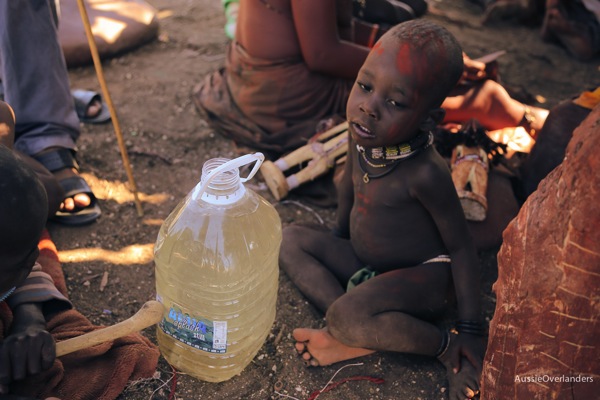
> Drinking water
Through the front entrance we were immediately greeted with the bum of a larger Himba lady who was laying on the ground under a stick shelter having her hair braided. Next to her was what we presumed her son. His tiny little brown bottom poking up into the air as he slept soundly. There were also four other ladies and numerous children. No men. They were off tending to their cattle. The ground inside their compound was dry dirt with a thick covering of goats droppings. Their blankets lay on top of the droppings.

> This lady was having her hair done in the traditional way which involved rubbing ash from the fire into it as it was twisted together. She later asked if we had any medicine for her aching back and feet

> Himba life
Joel showed us around their compound and explained how they live. They keep their food supplies in little mud huts that are raised up off the ground. The men have numerous wives and it is ok to have girlfriends too. The ladies are also allowed to have numerous boyfriends. If a man has left the village for the day and comes back to find a stick hanging above the door to his hut, then he must sleep outside. His wife has had a visit from one of her boyfriends and he must not interrupt.
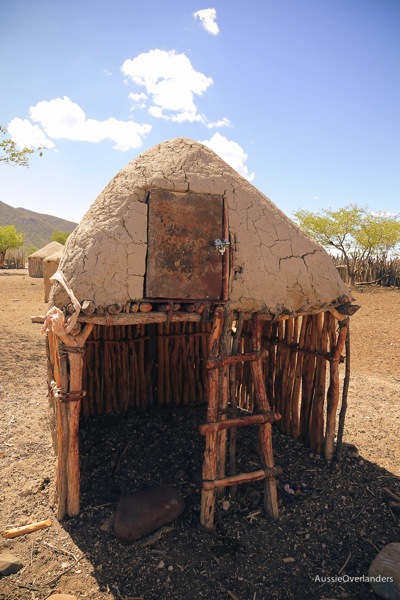
> The Himba food pantry

> The lady has had a visit from one of her boyfriends today
We spent the next three hours mingling with the ladies and playing with the kids. Our guide said that they rely a lot on the tours to get food and supplies. We brought some supplies for them also which consisted of maize, vaseline, sugar, tea bags, salt and some fresh apples we had in our car. We finished our visit with us showing them a small picture album we brought with us from Oz. It consisted of pics of both our families, a kangaroo, a koala and some of our travel pictures. They were amazed at the colours of the ocean and laughed as we actioned out a kangaroo hop. They had never seen the Sydney Harbour Bridge before and none of them had ever seen the ocean.

> Himba statue
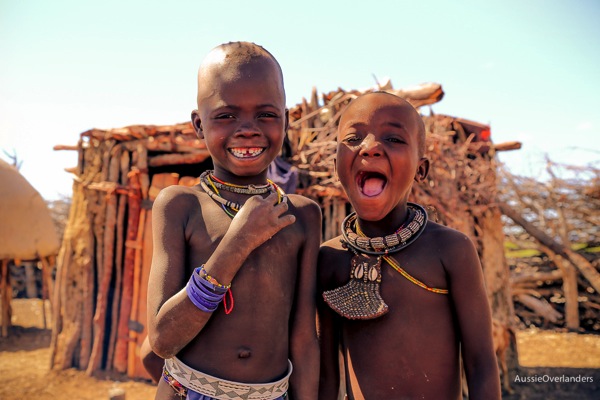
> These little dudes were having a great time
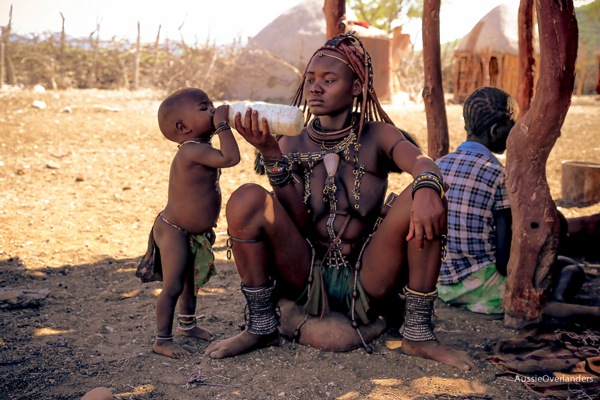
> This little tacker was stinging for a drink of goats milk. It didn’t matter to him it was warm and curdled

> “Aah shit Mum you spilt it on me”!
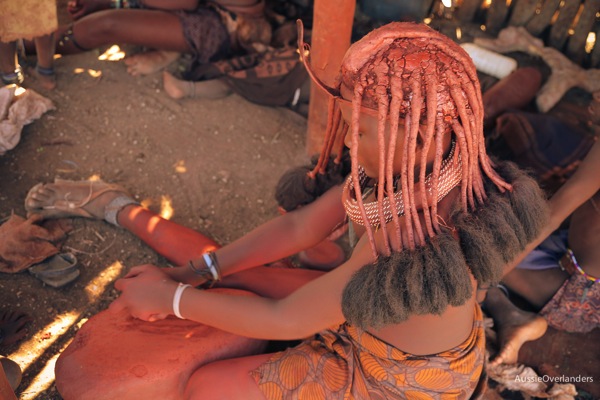
> Grinding up some ochre for the hair and skin. The black fluffy bits on the end of this girls hair are actually synthetic extensions.
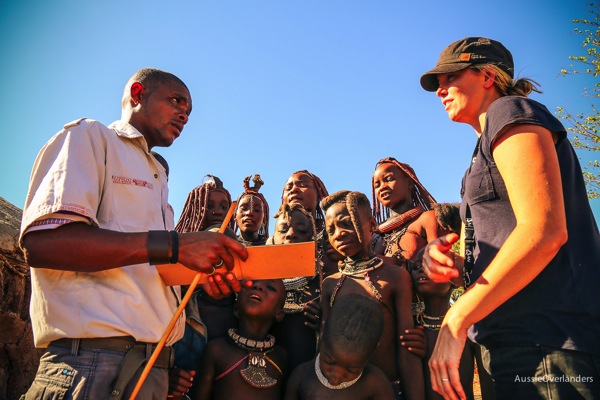
> Kirst explains our album of photos to our translator
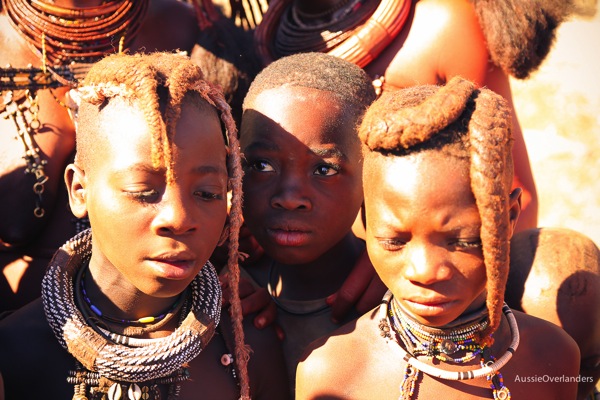
> The kids were fascinated by the picture of the horizontal falls in Western Australia
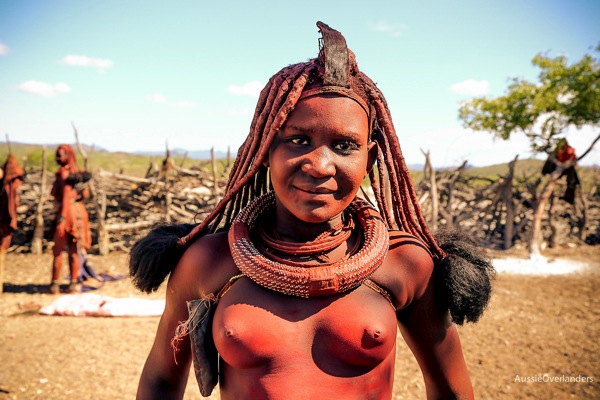
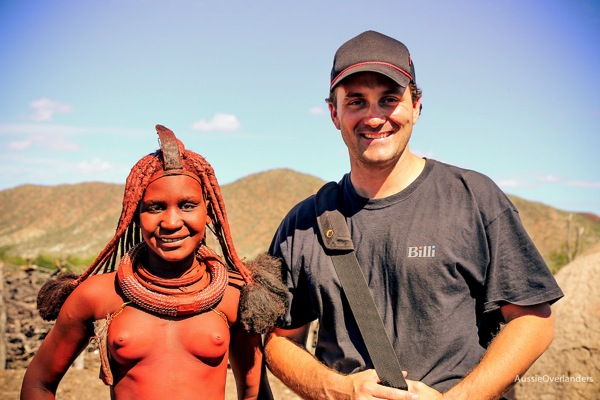
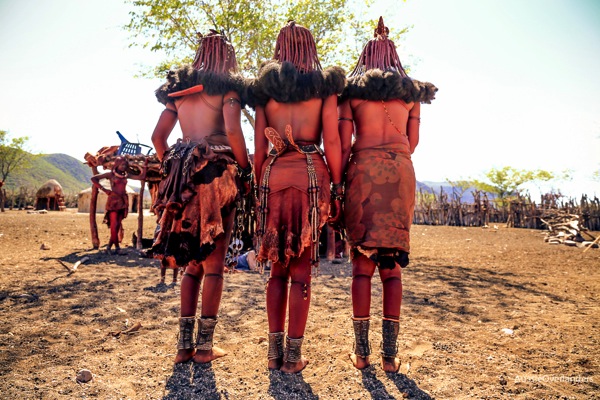
> Some of the ladies posing for us 🙂
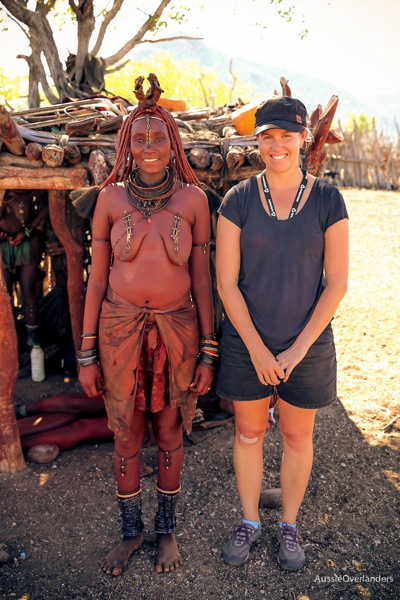
With our goodbyes said the ladies waved us off with massive white toothy smiles. It was something we will never forget. These people have nothing bar a few cows and goats. But they were happy. I hope that this traditional life lives on for many years to come.
Cheers
![]()
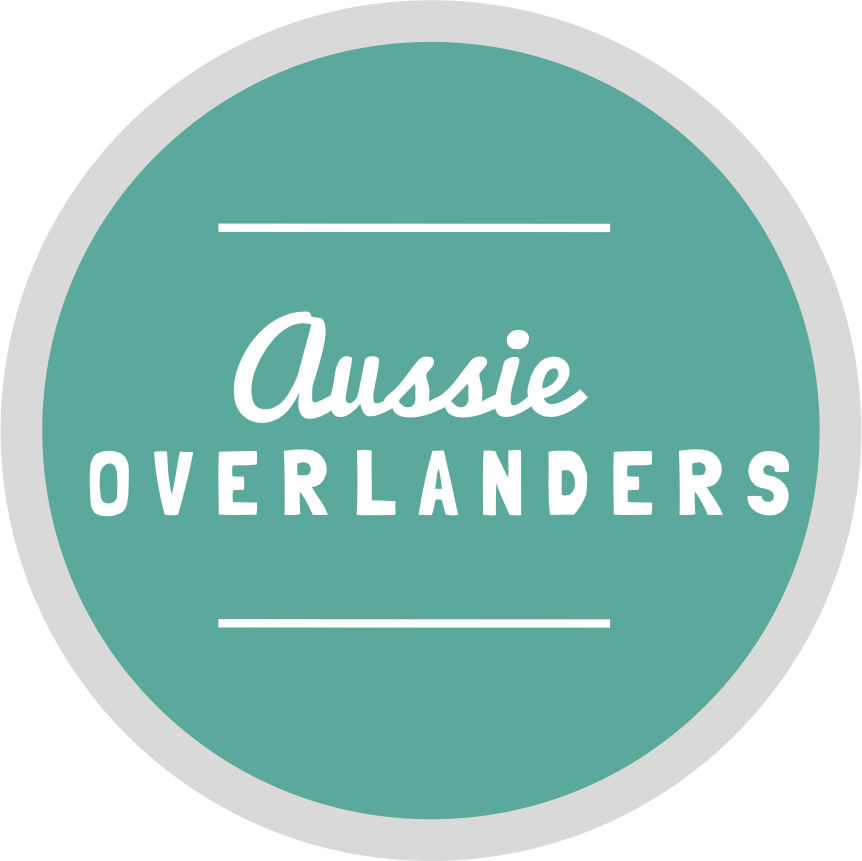

Kirsty your photos are amazing, i would love to get over that way one day in the future to experience this. Puts life in perspective and i feel so gratefull for what we have here at home. Wish everyone could be as happy as these people who have far less then what we have thats for sure.
enjoy your travels look forward to more updates and photos. Enjoy kel
It is great that they are happy! I think it is so easy to get caught up with “needing things”!! When really you don’t need much to be happy!! Would have been amazing!! I love the photos! I can’t imagine not ever having seen the Ocean it is such a big part of my life!!!
Cheers Justin